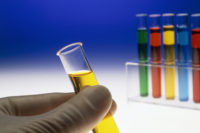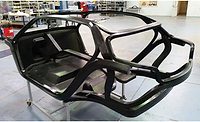Case Study: Keeping Odor and Flames at Bay with VAE Dispersions
New VAE dispersions have been developed for low-emission carpet applications.
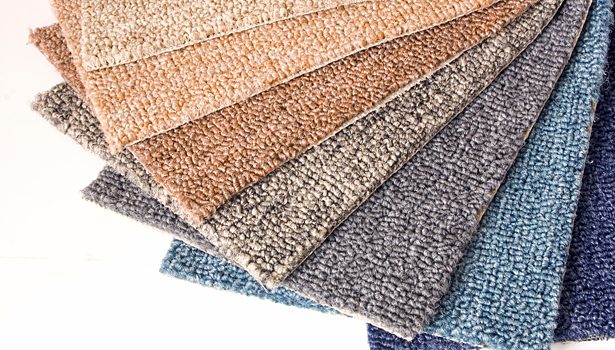
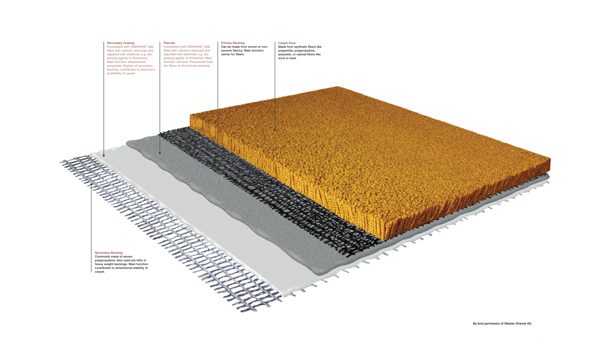
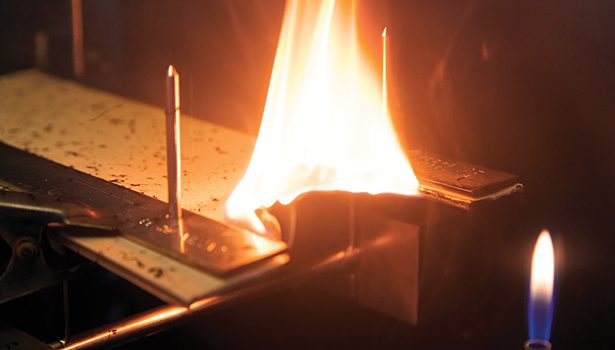
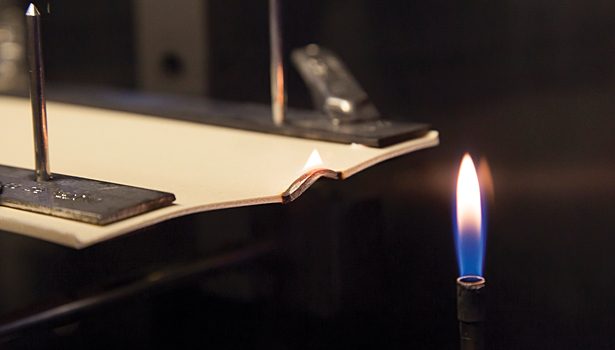
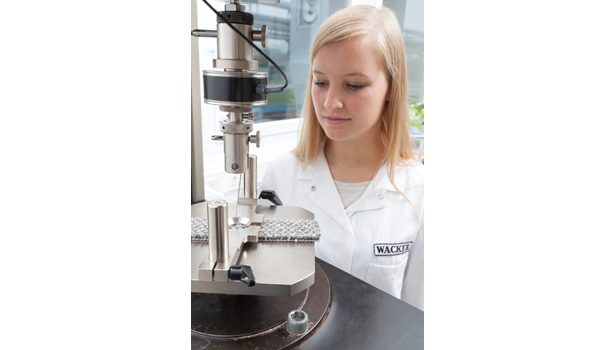





The choice of binders plays a key role in many applications and industries. Binders based on vinyl acetate-ethylene copolymers (VAE) have traditionally only been seen as a niche product, specifically in the carpet industry. Yet VAE dispersions, including the recently developed VINNAPAS® CA 55 from Wacker, offer a variety of advantages over traditionally used latex in carpet backings: their price is more stable and they emit hardly any volatile organic compounds (VOCs), provide greater flame-retardance, are easy to process—and are almost odorless.
“The typical smell that usually pervades a room for days after carpeting has been fitted is due to conventional styrene-butadiene (SB) latex binders,” explains Holger Künstle, Ph.D., who oversees Wacker’s carpet applications lab in Burghausen, Germany.
However, carpets using the new binder do not smell—at least not in the characteristic way of new carpets. In addition, the carpet backing looks the same as always; it still holds the carpet together, stopping the fibers from coming out even after many years’ wear and tear.
Pioneering VAE Technology
Polymeric binders are a traditional mainstay of the Wacker portfolio. Burghausen chemists began producing vinyl acetate from acetic acid in 1928. By 1966, the researchers had succeeded in combining vinyl acetate with ethylene to produce a copolymer. They created a binder that has now become an integral part of a wide range of applications, and a core technology at Wacker. VAE dispersions are widely used in adhesives, low-odor interior paints, textiles or nonwovens, and now in carpet applications.
When Robert Tangelder, business development manager for Wacker Polymers’ dispersion team in Europe, introduced these VAE dispersions for carpet backing applications to Willem van der Meer, purchasing manager at the Dutch carpet producer Edel Group, van der Meer realized this opportunity to start something new. Subsequently, he teamed up with his colleague Mike de Lange, Ph.D., who researches polymer chemistry and brought in his technical perspective to explore the innovation.
De Lange was immediately interested when Tangelder showed him the new VAE binders tailored to the European carpet industry needs. For the first time, the VAE binders gave him an alternative to the previously unrivaled SB—an alternative that could also be processed using existing equipment.
“Customers from Scandinavia, a very environmentally conscious market, had often asked me why we couldn’t manage without SB,” explains de Lange. Now he finally saw an opportunity to introduce a totally satisfactory substitute. In addition, the choice of a suitable carpet backing binder includes two additional factors: more security regarding the supply, and more stable prices. This is one of the main advantages of VAE dispersions, since they are less at the mercy of crude oil than SB.
Supply and Performance
VAE dispersions have already been successful in the U.S. Even though VAE has been used at a low level for over 30 years, Wacker has experienced a tenfold increase with all the key carpet manufacturers for the past three years. In North America, this shift has been enabled by the high and volatile price of butadiene, helped by the steady climb in the price of styrene. Both of these raw materials are traded globally, so the wave of volatility has been felt in all regions.
Of course, the price of VAE would mean little if it did not perform—and it does. Over several months, Wacker’s American carpet experts in Dalton, Ga., successfully switched over the pre-coat of one production line after the other and have been providing solid technical support to the mills ever since. In a next step, Wacker’s experts approached the European carpet market and found Edel Group extremely receptive right from the start. Since every carpet manufacturer has its own recipe adapted to existing equipment, Künstle and his team in Burghausen collaborated with Edel Group’s technical experts to create the optimal VAE carpet binder formulation for each carpet type.
Over the last few months, many square meters of carpet have passed through the hands of the chemist and his staff. Künstle’s team tested the coated carpet specimens under practical conditions, using machines that simulate shoes walking over the carpet thousands of times or the repeated rolling of office chair casters.
Künstle was particularly impressed by the tests carried out in his lab’s combustion chamber. During this test, he set fire to films of carpet backing compounds—some made with VAE, some with SB. He observed that VAE films are less flammable than SB films (see Figures 2
and 3, pp. 30-31). What’s more, certain VAE grades were even self-extinguishing, whereas compounds formulated with SB latex burned completely and released black smoke in the process.
He further realized that if the backings are bonded with VAE binders, much less flame-retardant additive (e.g., aluminum trihydrate) was necessary, which lowers the cost of the final formulation. Due to their lower flammability, carpets with a VAE backing are therefore ideal for commercial installations, such as in hotels and offices, or in aircraft construction and shipbuilding, where fire safety is a high priority.
Fewer Emissions
Equally important is the question of indoor emissions. Since their surface area is large, floor coverings have the potential to emit VOCs to the environment. The Association of Environmentally Friendly Carpets (GUT e.V.), an initiative launched by European carpet manufacturers, has established the “GUT” label. To receive this label, carpets must undergo extensive analysis for possible pollutants and meet rigorous standards. Carpets are tested for plasticizers, biocides, pesticides, aromatics, hydrocarbons, aldehydes and ketones, among other things. In addition, a sensory odor test is performed. “Our tests showed that with a VAE carpet backing, the total emissions of VOCs are much lower than when SB latex is used,” says de Lange.
Initially, de Lange had doubts about switching tufted carpet backing production completely over to VAE. When he used SB and VAE in parallel, the inherent differences in the flow properties of the two binders became apparent. The VAE formulation had to be optimized. But once VINNAPAS CA 55 was adjusted and following six months of intensive carpet testing, Edel Group was ready to change its production.
“From the moment we switched production entirely over to VAE, everything was fine,” de Lange recalls. Today, the in-factory processes are more stable and uniform with VAE than with SB in the past, and do not have to be modified as often.
In addition, the switch to VAE has enabled the Edel Group to guarantee its customers stable terms and conditions for the next quarter. “That would have been unimaginable for SB, as its price constantly peaks and troughs,” says Willem van der Meer.
A Breakthrough in a Challenging Market
That’s something Feike van der Heide likes to hear. The Dutchman is responsible for VAE dispersions in Wacker’s EMEA (Europe, Middle East and Africa) region. “The European carpet industry is quite a large, strategically important market for us,” he explains. “We have focused our efforts to penetrating this market by means of VINNAPAS CA 55, our dispersion specifically designed for carpets. We’re now glad that we made the breakthrough.”
What’s more, van der Heide is proud of the close cooperation with a first mover such as Edel Group, which has been the first manufacturer to switch over its production entirely to VAE both for the pre-coat and the secondary coat.
For additional information, visit www.wacker.com. Edel Group’s website is located at www.edelgroupcollection.com.
Editor’s note: Images courtesy of Wacker Chemie AG.
Looking for a reprint of this article?
From high-res PDFs to custom plaques, order your copy today!



